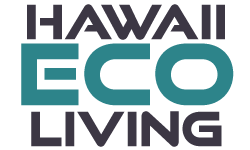 Permaculture as a Method for Ecological Healing: Maui Case Study with Native Plants and Stream Restoration
Permaculture as a Method for Ecological Healing: Maui Case Study with Native Plants and Stream Restoration
Photography by Jasmine A Koster
It may not seem readily apparent when viewing scenic photos, or strolling along the beach shoreline if you’ve been there, but something like 90% of Hawaii’s species are invasive. In other words, a species had no chance of getting to these isolated islands–and adapting to its new environment to become a new species over time–unless it could swim, fly, crawl out of the water, or hitch a ride on something else that could do so.
But first, we should talk about the difference between invasive species, native species, and endemic species.
Endemic species are those who evolve alongside other species gradually, to develop symbiotic relationships and interdependence with other species within its climate. They are oftentimes found solely in niche ecosystems, dependent on the unique conditions of that unique region.
Native species are those brought to a region by human cultures as they roamed and settled long ago, and have long adapted to the climates they are known to be, well, natives to. The relevance of native plants to the indigenous culture is that they are generally central to its politics, and integral to the culture and social structure.
One may be wondering how native species and invasive species vary if, indeed, there are examples of both that are culturally important, both historically and today. The difference lies in the careful balance the ecosystem maintains.
Source: Permaculture as a Method for Ecological Healing: – The Permaculture Research Institute

